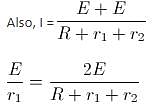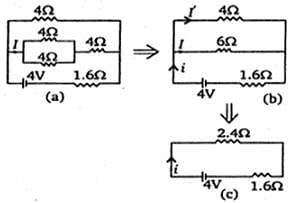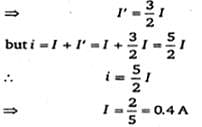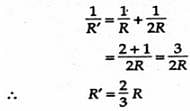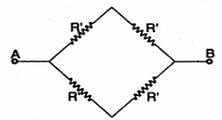Test: Current Electricity - 1 - CUET Humanities MCQ
10 Questions MCQ Test - Test: Current Electricity - 1
In the meter bridge experiment shown below, the balance length AC corresponding to null deflection of the galvanometer is x. What would be the balance length if the radius of the wire AB is doubled?
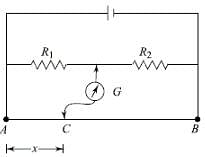

In the given circuit, it is observed that the current I is independent of the value of resistance R6. Then, the resistance values must satisfy
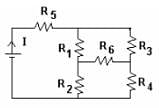

| 1 Crore+ students have signed up on EduRev. Have you? Download the App |
The resistance of an ammeter is 13Ω, and its scale is graduated for a current upto 100 A. After an additional shunt has been connected to this ammeter, it becomes possible to measure current upto 750 A by this meter. The value of shunt resistance is
In the given circuit, the potential difference across PQ will be nearest to
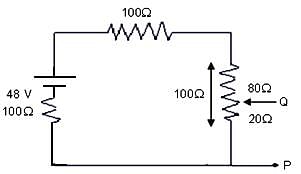
How will you combine two resistors to get maximum and minimum effective resistances respectively?
Five equal resistances, each of resistance R, are connected as shown in the figure. A battery of V volts is connected between A and B. The current flowing in AFCEB will be
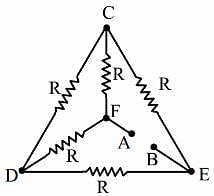
Two cells with the same emf E and different internal resistances r1 and r2 are connected in series to an external resistance R. The value of R, so that the potential difference across the first cell should be zero, is
In the circuit shown, value of current 'I' (in ampere) is
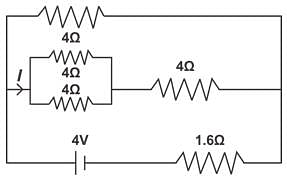
Thirteen resistances, each of resistance R ohms, are connected in the circuit as shown in the figure below:
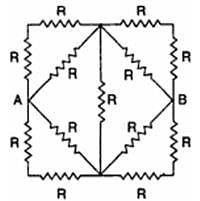
What is the effective resistance between A and B?







